This post will not cover the basics of haloscreen and pattern composition, it’s really just small bits of advices and tricks to make your life easier.
First thing is, prep your fabric pieces in bulk. Ideally you buy your halo in sheets. First is cut of the edge all along where the mesh woven dense (thats usefully for different aplications) Than fold your fabric up, and cut the whole thing im zig-zag edges to 4-6cm wide strips.
When you got the zig-zag edged strips, grab 4-7 piece of them and cut them up to 6-9cm long pieces at once.
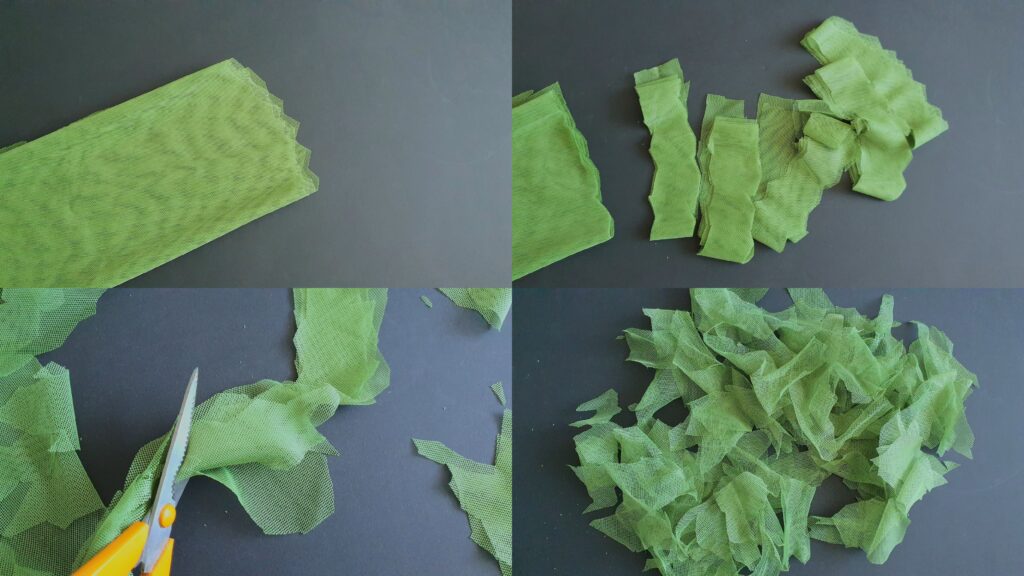
If you do it like that you can prep a whole suit worth of fabric in less than half an hour.
The 4-6×6-9cm sized pieces is my preference, smaller than that and you give yourself way too much work when you apply them on the suit, if you go much bigger than that you will end up with big floppy pieces of fabric which won’t act of seem like vegetation.
Once all your shades cut to pieces you can start to combine them. I prefer to use 3 piece each tie, this gave me the best results so far. With all 5 color options of haloscreen you can combine them and have a wide variety of lighter-darker, colder-warmer greens.
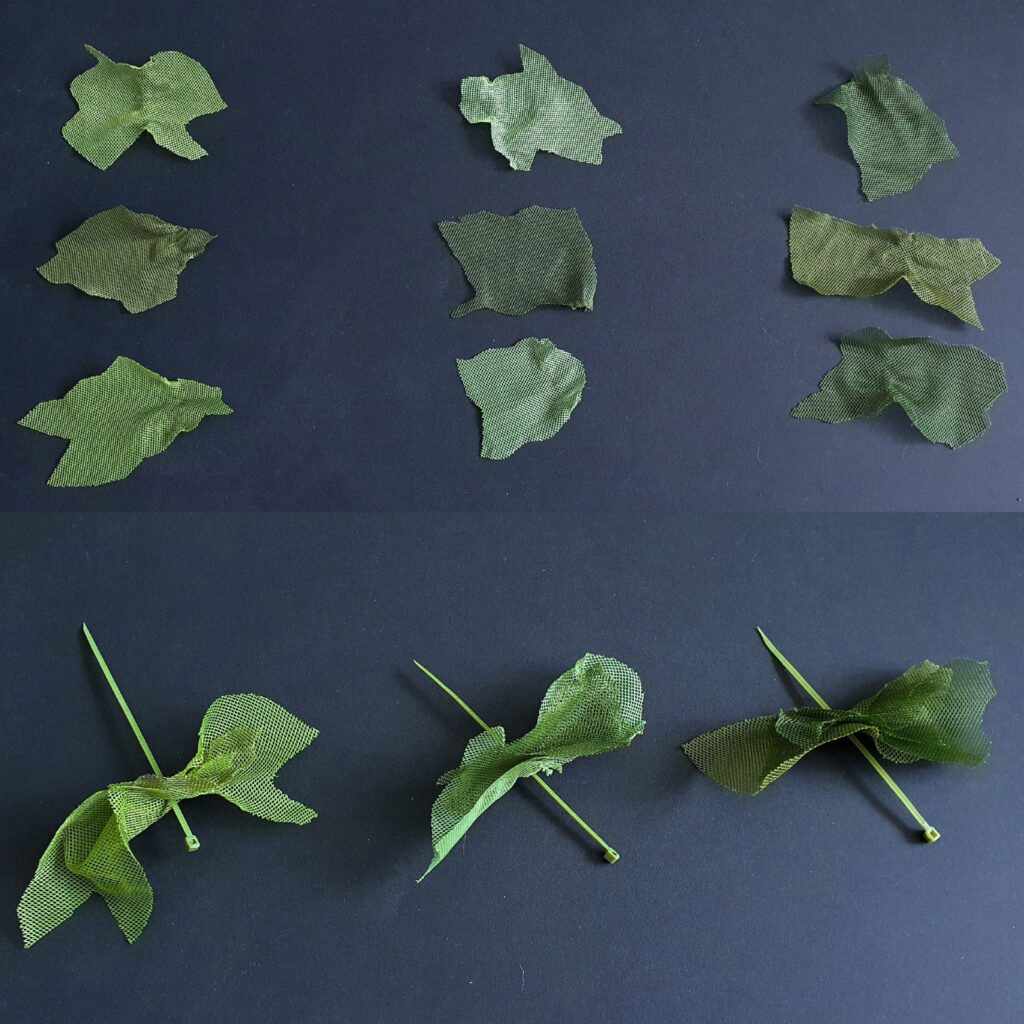
The next tip is for longevity of the suit. If you wearing one for a while you noticed that vegetation and terrain often catches on the fabrics and pulling pieces our of it. If you aren’t constantly repairing it, that result in bald spots on the suit.
BUT if you cut your zipties sharp and pointy, you can push the through haloscreen. If you install them on the base mesh this way there will be virtually no chance of loosing them on the field. If you find it difficult to push the zipties though the fabric you can use some punch tool to make a hole.
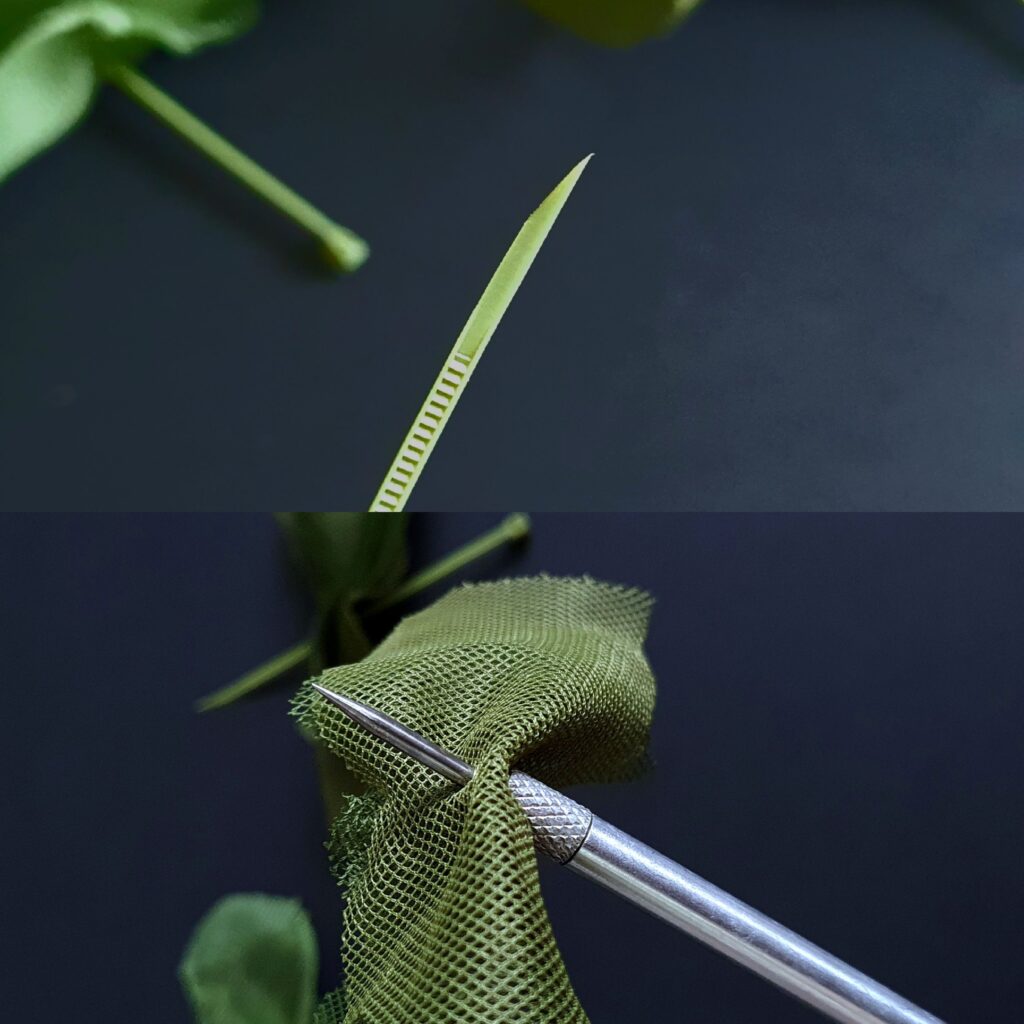
Pointy zipties also helps if you use a densly woven mesh base.
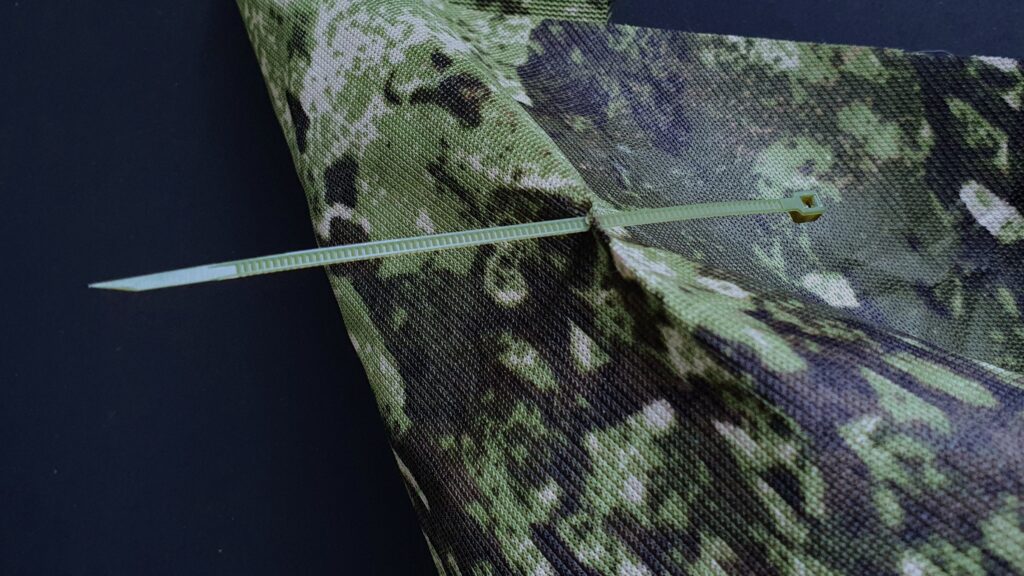
The following tricks are for those who like to use added natural vegetation. I personally rarely apply any natural veg, unless I go to a field where the vegetation is specific and I can not emulate it properly. (Example pine tree forests) Even in case of localy specific vegetation, I only choose to apply if I can use something that dosn’t need to be refreshed every hour or so… (Pices of fresh or dried pine tree)
But if you wan’t to use natural veg here are 3 tricks to properly install on your suit:
1. You only need a 15-20cm long piece of bungeecord and 2 zipties. Knot the end of the cord and make 3 knots in the midle of it. Install it eith zipties between the middle knots. Now you can tie any vegetation into your suit with almost no added weight.
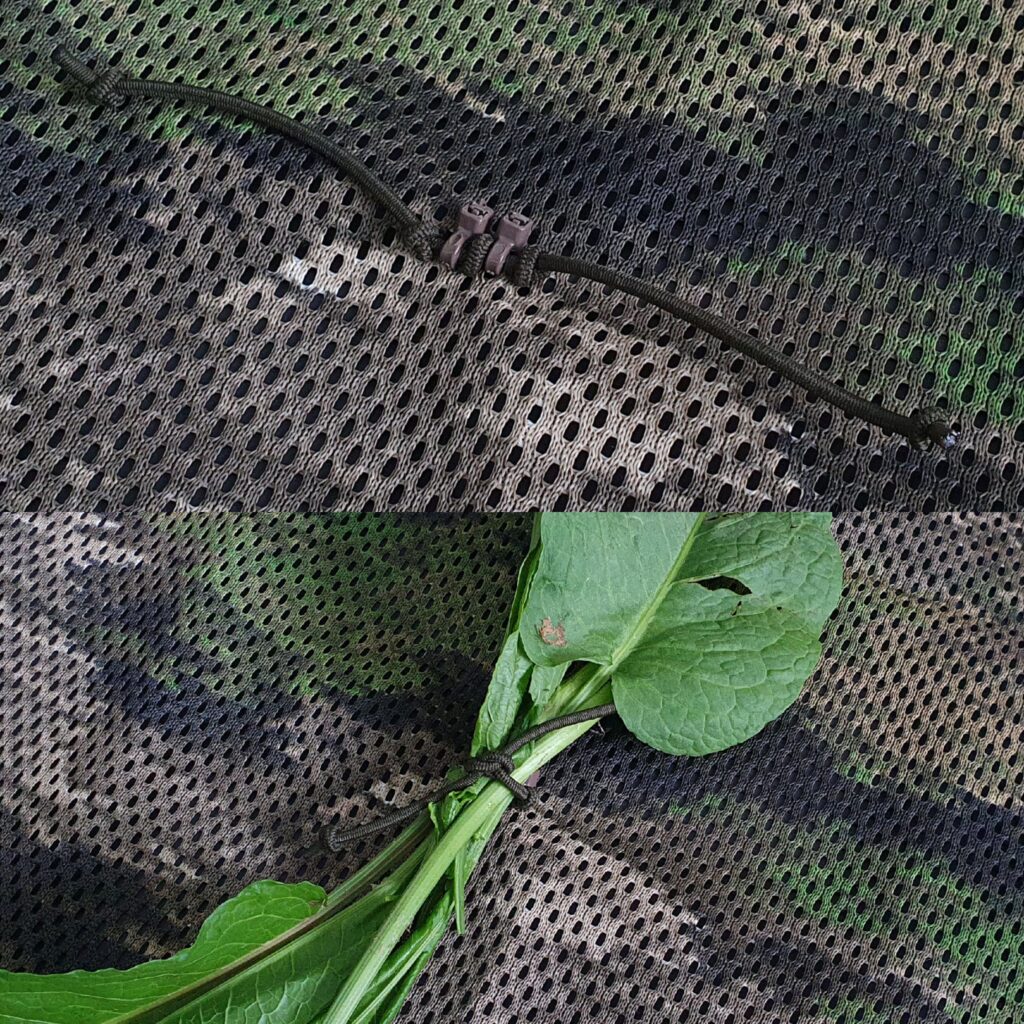
2. You need an adjustable cord slider and a piece of bungeecord and 1-2 zipties. Make a look out of the bungeecord, install the slider on the mesh with the zipties. Now you have a loop where you can install vegetation really quickly and firm.
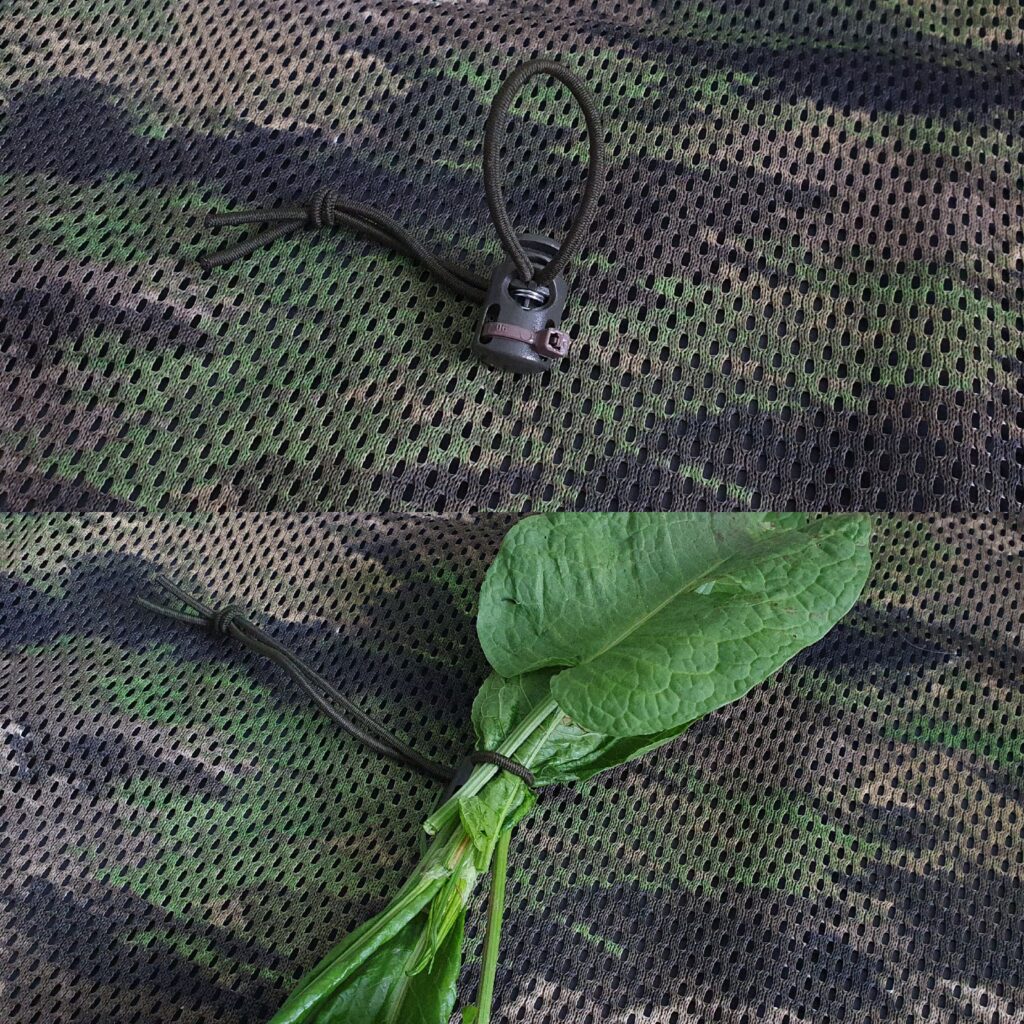
3. (This is my favourite) You need a molle bungee retainer and 3 zipties. Just simply attach the retainer with the zipties to the base mesh and it will hold anything you would add to your suit. You can also add pieces of haloscreen to the zipties, so the retainer itself is concealed when not in use.
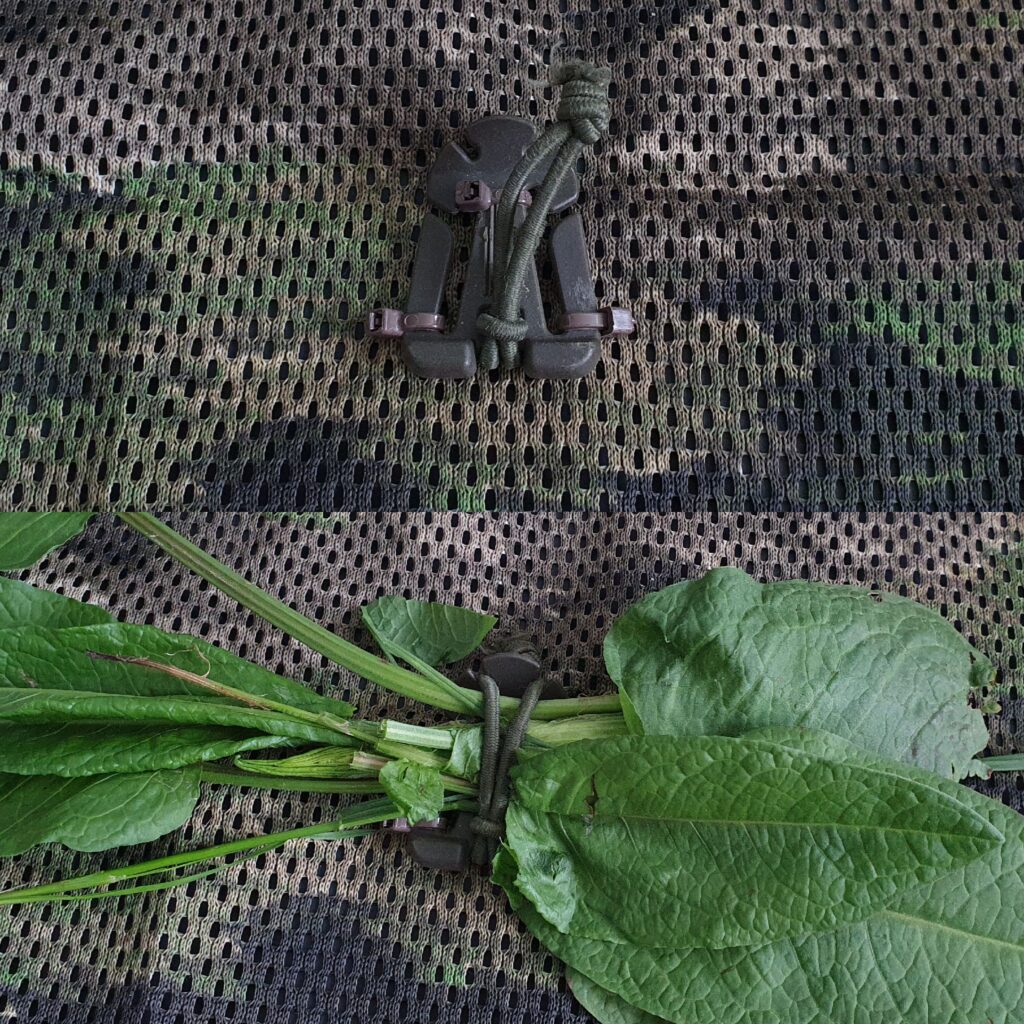
Here are my quick tips for haloscreen and natural vegetation aplication.
Also don’t forget to grab some halo from Sprinter Custom Ghillie until their stock lasts: https://sc-ghillie.pl/en/shop/kategoria/le-covert-sartorialist/?fbclid=IwY2xjawKT0VFleHRuA2FlbQIxMQABHjKLFwid0QenptobGvZ3Bh87sVNy1oMQTfDCNWKSDjR_kQqkHN8tgWzzSyG0_aem_Xy3d_tGwXhDqm6oZul4_Sg
Stay tuned!
Brilliant bit of info there mate. I’m glad I found your page the other day. Stuff like this is good dust